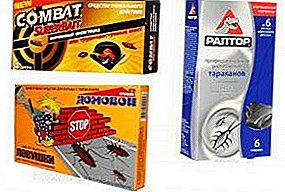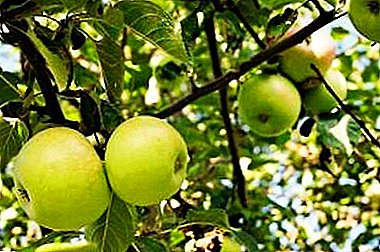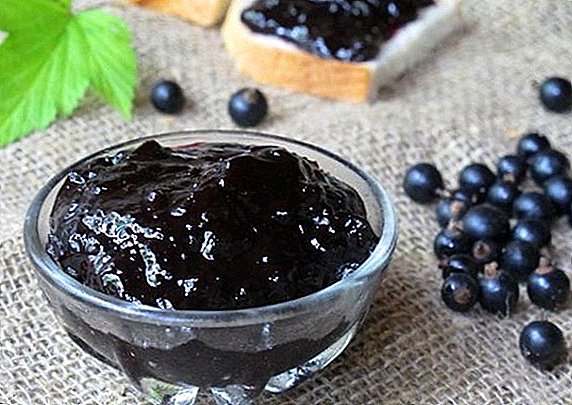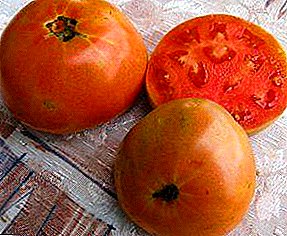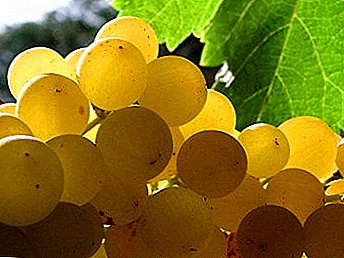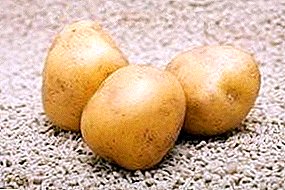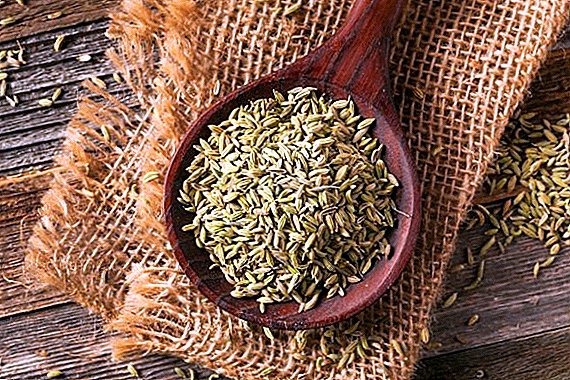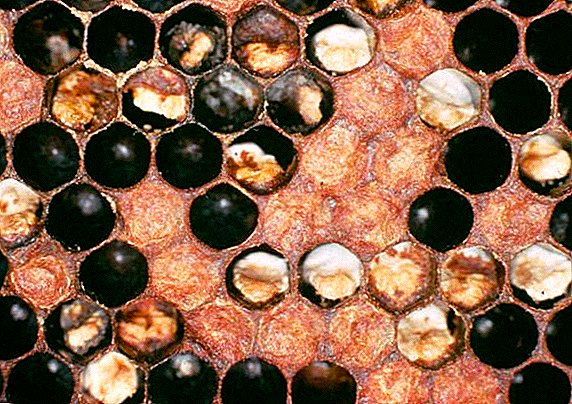 The exposure to diseases in bees is as high as in other insect species. When contacting plants during the collection of pollen, with animals, people or insects, the "family" increases the likelihood of infectious diseases. Dangerous to the beehive is a disease of ascospheresis, popularly referred to as calcareous brood.
The exposure to diseases in bees is as high as in other insect species. When contacting plants during the collection of pollen, with animals, people or insects, the "family" increases the likelihood of infectious diseases. Dangerous to the beehive is a disease of ascospheresis, popularly referred to as calcareous brood.
What is ascospheresis of bees?
Ascospherosis is an infectious disease of honeybee larvae, provoked by Ascosphaera fungi.
The fungus Ascosphaera apis is a parasite. Feeding on the nutrient substances of the drone brood, it eventually leads to the death of the larvae. Having sex differences in the mycelium (vegetative filaments), the fungus multiplies asexually. Merging, the vegetative cells of the mycelium of different sexes form sporocysts containing spores. The surface of these spores has high adhesive properties, which contributes to the wide spread of the fungus. The prevalence is also helped by the high resistance of the spores to environmental conditions and various kinds of chemicals.
Did you know? A bee family per year is able to harvest 150 kg of honey.

Getting to the hive with the bees, the spores get to the surface of the larvae, where they grow into the depths of her body, destroying tissues and organs. As a result of such a lesion, the larvae dry out and mummify, forming a dense mass of white or gray. With the defeat of the larvae inside the sealed cell, the fungus germinates outside, forming a white mold on the lid of the honeycomb.
Bee products are one of the world's most undervalued medical and preventive products; they include not only honey, but also wax, pollen, propolis, zabrus, pergué, jelly milk, bee honey, bee propolis, homogenate, bee venom, royal jelly Milk and bee venom.With the spread of the disease in the bee colony, dead larvae become easily visible at the bottom of the hive, at the arrival board or near the placement.

Causes of appearance and favorable conditions for development
Despite the high resistance to external conditions, disputes can develop only in a living organism. Therefore, the appearance of new litters in spring provides conditions for the spread of the fungus.
The causes of ascospheresis are:
- prolonged cooling and poor food supply, as a result of which bee colonies are weak and susceptible to infections;
- frequent disinfection, as a result of which the bees are reduced immunity and resistance to disease;
- the use of antibiotics and organic acids in the fight against other infections, also weakens the organisms of bees.

But the main causes of the spread of infection are favorable conditions that contribute to the reproduction and development of spores. These conditions include:
- high humidity due to prolonged rains;
- hives content in damp areas near water bodies.
Important! Regardless of the season, the temperature in the hive should be 34 ° C. The decrease in temperature by 2 ° C leads to a weakening of the bee family.

In addition to the direct spread of infection in the hive by bees, causes of ascospheresis can be:
- the use of contaminated pollen or honey to feed the bees;
- use of contaminated equipment for processing the area near the apiary;
- insufficient disinfection of hives.
Familiarize yourself with such varieties of honey as chestnut, buckwheat, acacia, acacia, pumpkin, watermelon, phacelia, linden, rapeseed, dandelion honey and honey from pine sprouts.

Course of the disease
Depending on the number of dead larvae, three stages of ascospherosis occur:
- Latent (or latent) period - dead and mummified larvae are not observed, but uneven brood and a small number of empty cells are present in the hive. In such a period, frequent change of females is characteristic, as a result of which the development of families is reduced.
- Benign period - characterized by a slow progression of the disease, the number of dead larvae does not exceed 10. Such a period usually occurs in early spring. In the absence of relapses in the course of the disease, by the middle of the summer season, bee families regain their activity.
- Malignant period - infection progresses rapidly, the number of dead larvae is more than 100. At the same time, the death of brood is 90-95%, which significantly reduces the strength of the family.

Latent and benign periods often pass without human intervention. The malignant period requires urgent intervention and proper treatment.
Did you know? Each hive cell contains more than 100 thousand dust particles of pollen.
How to identify: symptoms
In the initial stage of the disease, when there is no obvious presence of mummified brood, symptoms of a spreading infection can be a decrease in family activity and low productivity. An infection is also indicated by the fact that the brood seedlings infected by ascospherosis at this stage increase in size and the body completely occupies the volume of cells. At the same time, the brood gets a yellow tint and becomes covered with a glossy shine, the segmentation of the bodies of the larvae smoothes noticeably, and the body acquires a dough-like structure. 
As the infection spreads, mummified larvae from unsealed brood can be seen in the hive or near its location. As for the sealed brood, shaking the honeycomb is accompanied by a loud sound of the beatings of the dead mummified bodies against the walls of the cells.
The uneven and hilly surfaces of the honeycomb will tell about the presence of ascosferosis infection in bee colonies, which indicates the removal of dead larvae from sealed cells by bees. The cells at the same time have uneven corroded edges.
Important! The constant flow of feed into the hive increases the intensity of wax release by bees and contributes to the rapid construction of new honeycombs.

Treatment and Prevention
Depending on the degree of infection, treatment can be performed using antibiotics or using traditional remedies. But to precede treatment should competent training.
Driving the family into new hives
An important and first step in preparing for treatment is the relocation of bee colonies to new hives. Replacing the uterus with the barren will help to make a complete distillation in the presence of brood in the old hive. After 3 weeks, when the whole brood will be reborn as a bee, you can proceed to the resettlement. It is necessary to produce distillery in the evening. Infected beehives are moved back, and new ones are installed in their place. To facilitate the work of bees on the arrangement of the new hive, it is necessary to apply an artificial waxing, which is a set of plates made of pure beeswax with an already formed pattern of future cells.
Find out what are the ways of breeding queen bees.Go to the entrance ("door" for the bees) are replaced by a gangway - a sheet of plywood, which directs the swarm into the entrance. The infected cells taken out from the old hive are gently shaken off the gangway to free them from the bees, and fumigation of tobacco smoke will help to direct the swarm into the entrance. The filling of a new hive with honeycombs and bees must correspond to the fullness of the old hive, only a slight decrease in the number of bees is permissible. Experienced beekeepers also recommend replacing the uterus with a young and more prolific one when the haul is over.
 Free from infected bees
Free from infected beesDid you know? A prolific uterus is able to lay more than 1,000 eggs daily.
It is important to bear in mind that the new hive must be dry and insulated, contain top dressing in the form of honey or sugar syrup.
After the relocation of the old hive is important to free from litter and dead individuals, these "waste" must be burned. The remaining honeycombs with remnants of honey, pollen and mummified larvae in sealed cells are melted onto wax with its further use for technical purposes.  We waste beekeeping on wax
We waste beekeeping on wax
Disinfection of hives and inventory
The infected hive, as well as all things used during the haul (fumigator, gangway, etc.), must be treated with any disinfectants. Such disinfection may consist of thorough washing the hive twice and the inventory with a 10% hydrogen peroxide solution. After such a disinfection, all the treated should be rinsed with water and dried in the open air, away from the new apiary.
Clothing used in relocation and disinfection is treated by soaking in a solution of soda ash for 1-3 hours, followed by rinsing and drying.
Important! When a large amount of brood is raised, the life span of the bees is reduced.

Medications
In the latent and benign periods of the development of the disease, when the number of infected and dead larvae is not yet large, the infection can be cured by the timely use of antibiotics. In the fight against ascospherosis, these drugs will help:
- "Askotsin" - preparation in the form of an emulsion intended for dissolving in sugar syrup and spraying onto honeycombs or feeding to bees. The therapeutic effect occurs after 2-3 treatments with an interval of 3-5 days.

- "Dikobin" - concentrated preparation for the treatment of bees. Used as a working solution for spraying onto the honeycombs and the walls of the hives. The therapeutic effect occurs on the 3-4th day of treatments.

- "Unisan" - a drug with a broad spectrum of action, is available in a concentrated form for the preparation of a solution. The resulting working solution is processed cells and bees once in 5-7 days until the complete disappearance of signs of the disease.

- "Nystatin" - An antibiotic used for processing and feeding bees. For treatment, the drug is dissolved in honey or sugar syrup with a threefold use every 3 days.

- "Polysot" - an effective protein supplement for the recovery of uterine bees and larvae. Used for feeding in the form of cooked cakes, spread out on the comb.

Did you know? More than 100 g of honey is required to feed 1,000 broods.
Folk events
In comparison with the use of antibiotics, the treatment of fungal infections with folk methods is also highly effective. Experienced beekeepers in the fight against the disease often use tools such as yarrow, horsetail, celandine, garlic and slaked lime.
The use of yarrow and horsetail is in their placement inside the hive before the plants are completely dry, and they must be wrapped in a gauze bag beforehand. When herbs dry out, they can be replaced with fresh plants. 
With the help of decoction on the basis of celandine, the hive, honeycomb and bee are processed. The broth is prepared by boiling water 100 g of fresh celandine in 2 liters of water. The resulting solution must be insisted 25-30 minutes and cooled for use.
Read the description of the breed of bees and the differences between them.Garlic can be used by placing arrows of young garlic in a hive or 1 clove of garlic milled into gruel.
Slaked lime is used by scattering 1-2 cups of the substance on the bottom of the hive. Cleaning the lime is not necessary - the bees themselves will clean the bottom of the nest, and during this time the fungus will also die. 
Important! Popular methods of struggle, when used together, increase the effect of antibiotics and accelerate the recovery of the family.
Prevention
Prevention of ascospherosis and other infectious diseases is to comply with such actions:
- timely insulation of hives for the winter season;
- the location of apiaries mainly in dry areas;
- timely cleaning from the hives of podmor (bees who died naturally) and its burning;
- periodic disinfection of inventory using a 10% solution of hydrogen peroxide or soda ash;
- prevention of feeding contaminated feed (honey or perga).
 Warming hives for the winter season
Warming hives for the winter seasonIt will be interesting to find out what diseases bees treat.
Ascospherosis is a common bee disease, the outbreaks of which in strong bee families often pass by themselves. Weakened families are not able to cope with the disease themselves, and therefore need the use of antifungal drugs. Traditional methods of struggle with ascospherosis are also effective and can be used in tandem with antibiotics, but timely prevention of infectious diseases can prevent infection.
Video: we treat ascospherosis
Feedback from users of the network about beescosferosis



Even strange. It would be nice to find the true cause.
If only his people were not sick, then it would be understandable, rejection, etc. But the external signs also quickly disappeared from the purchased ones. A place, for example, a lot of yarrow is growing, yes, but the neighbors have obvious signs of ascoperosis. Dry, too, no, for example, in the spring and in the rain on my clay-pebble slope in boots I have to walk between the hives - the water is flowing. And the place is not very blown and hives between the trees. Voshchina not contaminated, but of course, I still have large reserves of pre-revolutionary-Soviet, but it seems that there is not enough of one foundation. I do not use any drugs and supplements. But a friend of the beekeeper ascoferosis almost killed the apiary, in the summer in multi-case he had 1-2 bee cases each, but then he was cured with ascoecine.
Or is it pure clean rescue?












